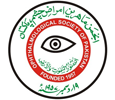ISSN 0886-3067



Volume No 36 Issue No 2
Diagnostic Accuracy of Direct Ophthalmoscopy and Non-Mydriatic Retinal Photography by Trained Optometrists for Screening of Diabetic Retinopathy
Purpose: To determine the reliability of direct ophthalmoscopy and Non-Mydriatic fundus photography for screening of Diabetic Retinopathy by optometrist. Study Design: Observational, cross sectional. Place and Duration of Study: Al-Ibrahim eye hospital, Karachi from October to December 2018. Material and Methods: All individuals with type 2 diabetes of? 40 years of age were screened for diabetic retinopathy (DR) by two trained optometrists and an ophthalmologist. First Optometrist used Non Mydriatic Fundus Camera (NMFC) and second optometrist used direct ophthalmoscopy (DO) after dilating the pupils. Final examination was done by the Ophthalmologist with slit lamp using Volk fundus lens which was considered as reference standard. Every investigator was kept unaware of the findings of others. Results: A total of 698 eyes of 349 respondents were screened. Ophthalmologist could not make decision by bio microscopy in 44 (6.3%) individuals as compared to 128 (18.3%) by 1st optometrist by NMFC and 142 (20.3%) by 2nd optometrist with DO. Diabetic retinopathy (DR) was diagnosed in 1493 (21.4%) with slit lamp, in 1172 (16.8%) with NMFC and in 1333 (19.1%) with DO. Sensitivity of NMFC was 76% and that of DO was 64.8%. Specificity of NMFC was 97.45% and that of DO was 96.63%. Positive predictive value (PPV) of NMFC was 89.33% and that of DO was 84.3% Negative predictive value (NPV) of NMFC was 93.33% and that of DO was 90.7%. Conclusion: NMFC is recommended tool for DR screening; but DO by well-trained optometrist can be reliable where neither ophthalmologist nor NMFC is available.
HTML Full Text | Complete PDF